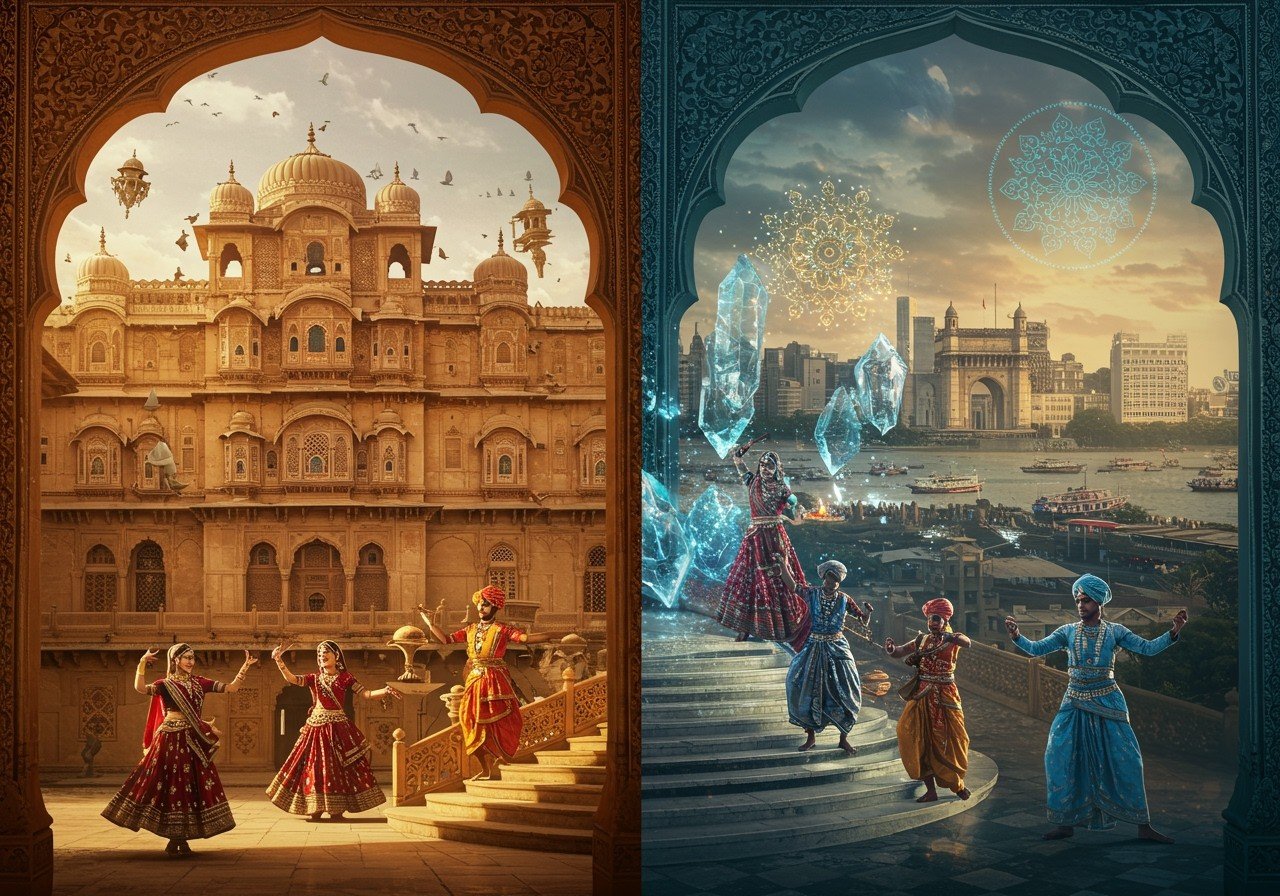
Medieval India, spanning from the 6th to the 16th century, stands as a pivotal era in the subcontinent’s history. This period witnessed the rise and fall of powerful empires, the flourishing of arts and literature, and the fusion of diverse traditions, creating a rich legacy that continues to shape modern India.
The Composite Culture of Medieval India
Medieval India was a melting pot of cultures, languages, and traditions. The interaction between various groups led to the emergence of a unique composite culture. Indo-Islamic architecture, exemplified by magnificent structures like the Qutub Minar and the Taj Mahal, showcases the harmonious blend of architectural styles. This era witnessed a vibrant exchange of artistic and literary ideas. Persian literature introduced the ghazal, a poetic form that remains popular in modern India. The Mughal cuisine, with its rich flavors and aromatic spices, continues to tantalize taste buds and influence contemporary Indian culinary practices.
Sufism, a mystical branch of Islam, profoundly impacted Indian spirituality, emphasizing love, devotion, and harmony between different faiths. Trade and commerce flourished, facilitating cultural exchange and the dissemination of new ideas and technologies. Languages like Urdu developed during this period, becoming an integral part of India’s linguistic landscape.
Cultural and Religious Movements in Medieval India
Medieval India witnessed dynamic cultural and religious movements that reshaped the social and spiritual fabric of the subcontinent. Regional literature flourished, with poets like Kabir, Tulsidas, and Mirabai capturing the socio-political climate and spiritual essence of their times. Their works often challenged societal norms and emphasized personal devotion.
The Bhakti movement, a significant spiritual force, advocated for personal devotion to God and challenged the rigid caste system. Saints like Guru Nanak, the founder of Sikhism, championed equality and social justice. The Sufi movement, with its emphasis on mysticism and poetry, sought to bridge the gap between Hindu and Muslim communities. These movements fostered a sense of unity and shared spiritual experience.
The Enduring Influence of the Bhakti Movement
The Bhakti movement’s focus on personal devotion to a deity, rejecting elaborate rituals, resonated deeply with the masses. Prominent Bhakti saints, including Kabir, Tulsidas, and Surdas, composed devotional poetry and songs that continue to inspire and uplift. The movement’s emphasis on vernacular languages made religious teachings accessible to common people, furthering its impact.
The Bhakti movement also significantly influenced Indian music and dance, contributing to the development of classical forms like Carnatic and Hindustani music. Its emphasis on personal devotion and spiritual equality continues to shape modern Indian spirituality, promoting inclusivity and a sense of community.
Medieval India’s Influence on Modern India
Medieval India’s influence on modern India is profound and multifaceted. The architectural marvels of this era continue to inspire awe and serve as reminders of India’s rich past. The fusion of artistic styles, literary traditions, and culinary practices has shaped modern Indian culture in significant ways.
The spiritual and social reforms initiated during the medieval period, particularly through the Bhakti and Sufi movements, continue to resonate in modern India. These movements championed values of equality, tolerance, and personal devotion, contributing to a more inclusive and harmonious society. The festivals, languages, and artistic expressions rooted in the medieval era remain integral parts of modern India’s cultural tapestry.
Poojn.in: Connecting Modern Devotees with Ancient Traditions
Poojn.in, India’s leading online store for cultural and religious goods, plays a vital role in connecting modern devotees with the rich traditions of Medieval India. Just as devotees in medieval times offered specific items during worship, Poojn.in provides authentic puja items and materials for various deities, ensuring the continuation of these sacred customs.
Poojn.in offers a wide range of products, including:
- Bel malas: These traditional prayer beads, crafted from the wood of the bel tree, are used for japa meditation and are believed to have spiritual significance.
- Tulsi malas: Made from the sacred tulsi plant, these malas are commonly used in Vaishnava tradition and are believed to enhance spiritual practices.
- Shiva Lingams: Representing Lord Shiva, these lingams are used for worship and are available in various materials, including marble dust.
- Incense sticks: Used to create a sacred atmosphere during prayers and rituals, Poojn.in offers a variety of incense sticks with traditional fragrances.
- Sandalwood: Known for its fragrance and spiritual significance, sandalwood is used in various rituals and is available in pure form at Poojn.in.
By providing these and other essential puja items, Poojn.in helps individuals connect with their heritage and continue the sacred traditions of Medieval India in the modern world.
Further Exploration:
- Ramayana Characters and Life Lessons
- Dharma in the Ramayana
- Ramayana: Timeless Lessons for Modern Life


